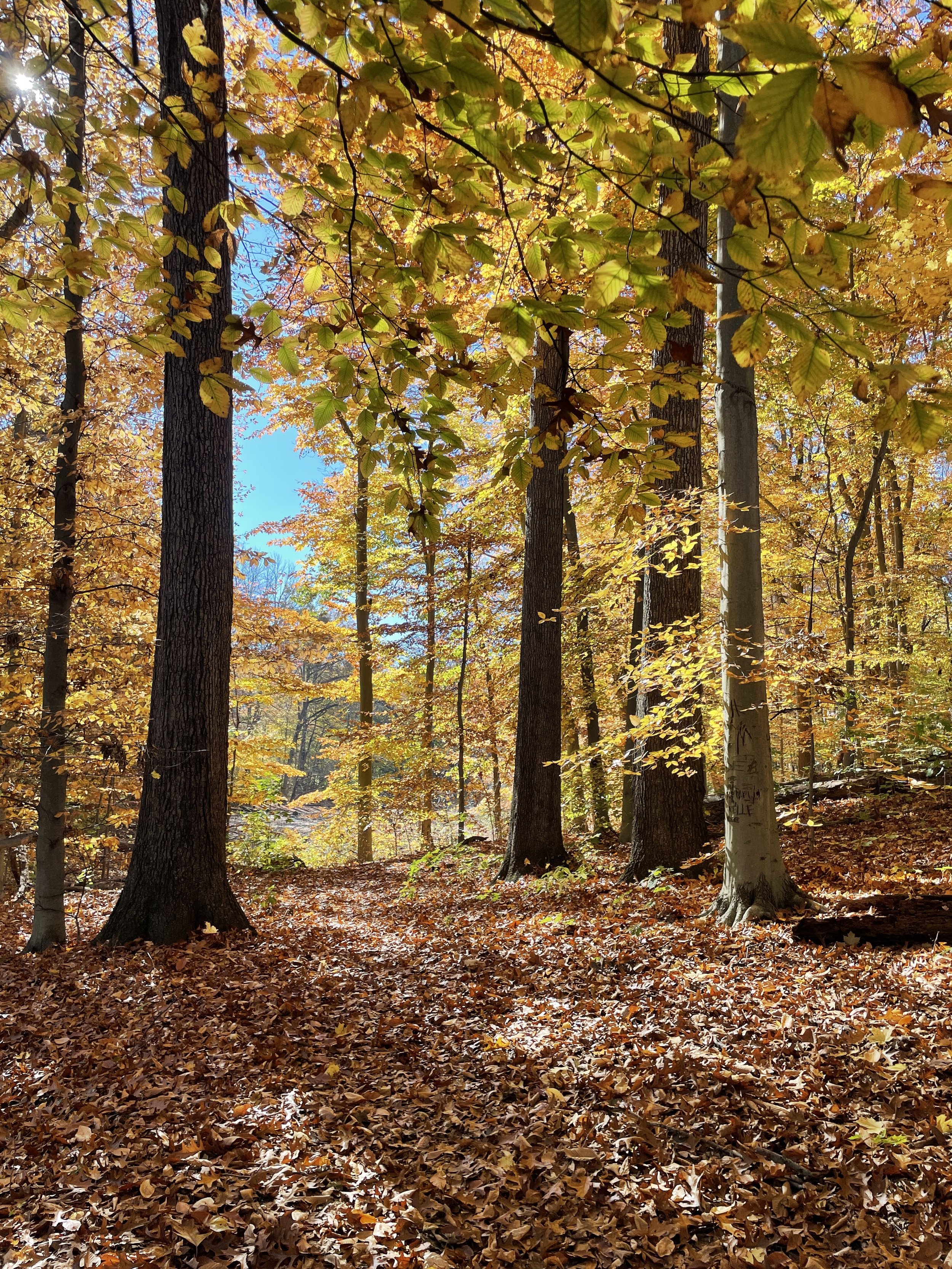Environment New Jersey: “Protect the Drew Forest”
By Doug O’Malley and Asha Dhakad
Drew University, in the North Jersey town of Madison, is not called the “University in the Forest” for nothing. On its property is a 53-acre forest: the Drew Forest. There, you can find some of the oldest trees in the region; you can also find students conducting research for their environmental science classes and visitors enjoying the trails. Unfortunately, the forest is under threat – there is a plan to sell off some of the forest and open it to development. With our allies, we have opposed this plan and called for permanent protection in the form of a “conservation sale” where the land would be sold to a buyer who would conserve rather than develop it.
The Drew Forest is the home to a tremendous amount of environmental diversity. It houses more than 120 species of birds, including egrets, herons, raptors and warblers, as well as turtles, foxes and an endangered bat species. For botanists and tree lovers, the forest is the habitat of many native plants, such as 28 species of trees, 17 varieties of shrubs and 20 varieties of wildflowers. And the forest also contains two glacial ponds, deep dells and important vernal pools. Its unique topography mitigates flooding, as documented after Hurricane Ida.
The Forest has been an important resource for the surrounding ecosystem, even before it became a part of the Drew campus 150 years ago. The Drew Forest’s trees store carbon dioxide in their leaves and filter toxic chemicals from the atmosphere. The forest annually purifies more than 71 million gallons of rainwater. Its Buried Valley Aquifer is an important source of drinking water for nearby towns. The trees protect residents of industrial areas from air pollution, noise, extreme heat and other human-caused issues.
There have been many efforts in recent years to conserve the Drew Forest. A majority of it is part of the Drew Forest Preserve, and remains undeveloped. The forest, however, has faced deer overpopulation and the spread of invasive plant species, such as wisteria and garlic mustard. The university built 22 acres of fencing to keep the deer out of the forest; students controlled the invasive species and planted native plants, which were prioritized to restore the ecosystem and fight their extinction. In 2013, the Drew Forest Preserve won the Governor’s Award for Healthy Ecosystems.
This could all be destroyed. Drew University has asked the town of Madison to change the forest’s zoning to allow hundreds of houses to be built; it also intends to sell some of the Forest Preserve for development. The local community reacted by starting a movement to stop the project; the message was spread through social media content, flyers and a petition to protect all 53 acres. According to Friends of the Drew Forest, the members of which wrote the petition, developing the forest would decrease the number of trees that help fight climate change, animals’ and plants’ habitats, and areas that community members use for learning and spending valuable time outside.
Instead of changing the zoning, we are joining our allies to call for a conservation sale. There can’t be a University in the Forest without a forest and more than 13,000 people have signed a petition in support of a conservation sale.
If all of the Drew Forest is preserved, the trees can continue to filter water for the ecosystem and the local community. The natural world can fight climate change because the leaves will still hold carbon dioxide. Drew University students and visitors can use this valuable resource for their classes, research and recreation forever. If the entire forest is protected, there will be more nature in North New Jersey for generations to come.
Doug O'Malley
State Director, Environment New Jersey
As director of Environment New Jersey, Doug has led campaigns to fast-track New Jersey’s clean energy economy via offshore wind, solar and energy efficiency programs, to rejoin New Jersey in the Regional Greenhouse Gas Initiative (RGGI) program, oppose the expansion of fossil fuel projects, and expand electric vehicles across the state. He has also led campaigns focused on New Jersey’s drinking water quality and protection of the state’s watershed lands. Doug serves on the boards of the Work Environment Council, and the Environmental Endowment of New Jersey and is the president of ChargEVC, an electric vehicle coalition. He was recognized by EPA Region II with an Environmental Quality Award in 2012.
Asha Dhakad
Conservation Intern
Environment New Jersey: Letter in support of conserving the Drew Forest
August 8, 2022
“There is a legacy of restoration and civic engagement that complements the ecological importance of the Forest. Major support and allies have come from the University and its community, but also the Hepburn-Martin Foundation, the Garden Club of Madison, the New Jersey Committee of the Garden Club of America and the U.S. Fish and Wildlife Service.”

